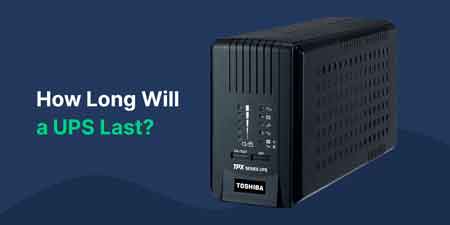Can You Plug an Extension Cord into a Power Strip?
By R.W. Hurst, Editor

NFPA 70e Training
Our customized live online or in‑person group training can be delivered to your staff at your location.

- Live Online
- 6 hours Instructor-led
- Group Training Available
Download Our OSHA 3873 Fact Sheet – Minimum Approach Distance and Training Requirements

- Calculate MAD using voltage and overvoltage values
- Ensure proper communication between host and contract employers
- Meet OSHA training requirements for qualified electrical workers
No, you should not plug an extension cord into a power strip. This daisy-chaining setup can cause overheating, electrical fires, or circuit overload. Always use each device as intended and follow electrical safety guidelines to avoid serious hazards.
Can You Plug an Extension Cord into a Power Strip?
It is not safe to plug an extension cord into a power strip.
✅ Creates fire and shock risks due to circuit overload
✅ Violates basic electrical safety codes and best practices
✅ Not recommended by OSHA, NFPA, or manufacturers
The question of whether it's safe to plug an extension cord into a multi-outlet is common among those managing multiple electronic devices. While it might seem like a convenient solution, it comes with significant risks and considerations. This article will address safety concerns, risks, guidelines, alternatives, and safe practices for managing electronic devices. If you're concerned about workplace safety and want to avoid misuse of cords and power bars, see our comprehensive guide to electrical safety.
Both devices are designed for specific purposes and have load capacities that, when exceeded, can lead to dangerous situations. A power strip is intended to provide additional outlets and may offer surge protection, but it is not designed to handle the extended load that an extension cord might introduce.
Potential Risks of Plugging an Extension Cord into a Power Strip
To ensure electrical safety in your home, it's important to regularly inspect all wall outlets and circuit breakers for signs of wear or damage. A malfunctioning electrical outlet can pose a serious fire hazard, especially if the connected circuit breakers fail to trip during an overload. By checking wall outlets for loose connections and ensuring circuit breakers are functioning properly, you can prevent many common electrical issues before they become dangerous.
FREE EF Electrical Training Catalog
Download our FREE Electrical Training Catalog and explore a full range of expert-led electrical training courses.

- Live online and in-person courses available
- Real-time instruction with Q&A from industry experts
- Flexible scheduling for your convenience
-
Overloading: Both strips and extension cords have a maximum load capacity. Plugging an extension cord into a strip can easily lead to overloading, which can cause overheating and potential fire hazards.
-
Fire Hazards: Overloading can cause the components within the power strip or extension cord to heat up, potentially leading to fires. The insulation on wires can melt, creating short circuits and sparking fires. To understand the consequences of circuit overloads and prevent injury, explore what can happen during an arc flash incident.
-
Electrical Failures: Overloaded circuits can result in blown fuses, tripped breakers, or damage to connected devices. These failures can interrupt electricity and damage sensitive electronic equipment.
Guidelines and Recommendations from Electrical Safety Authorities
Electrical safety authorities, such as the National Electrical Code (NEC) and Occupational Safety and Health Administration (OSHA), provide guidelines to prevent unsafe practices. Key recommendations include:
-
Avoid Daisy-Chaining: Do not connect multiple strips or extension cords together. This practice, known as daisy-chaining, significantly increases the risk of overloading and fire.
-
Use Appropriately Rated Devices: Ensure that both the multi-outlet and extension cord are rated for the electrical load they will carry. Check the manufacturer's instructions and ratings before use.
-
Inspect Regularly: Regularly inspect bars and extension cords for signs of wear, damage, or overheating. Replace any damaged devices immediately.
Alternatives to Plugging an Extension Cord into a Power Strip
If you need more outlets or reach, consider safer alternatives:
- Strips with Longer Cords: Use a multi-outlet that has a sufficiently long cord to reach your electrical outlet. This eliminates the need for an extension cord.
-
Additional Outlets: Install additional outlets in your home or office. This may require the services of an electrician, but it provides a permanent and safe solution for distributing electricity.
-
Advanced Solutions: Utilize advanced solutions, such as UPS or electrical distribution units (PDU), designed to handle higher loads and provide surge protection.
Safely Managing Multiple Electronic Devices
To manage multiple electronic devices safely, consider the following tips:
-
Calculate Load: Calculate the total load of the devices you plan to connect to a single electrical outlet. Ensure it does not exceed the power strip’s rated capacity.
-
Use Surge Protection: Choose electrical outlets with built-in surge protection to safeguard against voltage spikes that can damage electronic devices.
-
Distribute the Load: Spread the load across multiple outlets if possible. Avoid concentrating too many devices on a single multi-outlet.
-
Professional Installation: For complex setups, consider hiring a professional electrician to ensure that your distribution is safe and compliant with electrical codes.
So, Can You Plug an Extension Cord into a Power Strip?
While it may seem convenient to plug an extension cord into a multi-outlet, doing so poses significant safety risks, including overloading, fire hazards, and electrical failures. Following guidelines from electrical safety authorities and opting for safer alternatives can help manage your electrical devices effectively. By calculating loads, utilizing suitable devices, and ensuring proper installation, you can maintain a safe and efficient electrical distribution system in your home or office. Finally, our basic electrical safety section offers foundational tips for safely managing extension cords, multi-outlets, and other electrical devices.
Related Articles







